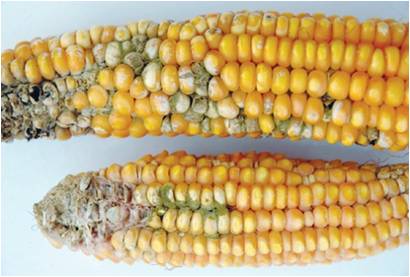
Aflatoxin infested maize
Farmers who have been grappling with afltoxin on their maize and other food crops in Kenya can reduce aflatoxin by a process called nixtamalization developed by researchers at the Kenya Agricultural and Livestock Organization (KALRO). Aflatoxin is a highly poisonous cancer-causing chemical produced by a fungus scientifically known as Aspergillus flavus.
With maize being the staple food crop in Kenya, aflatoxin poses a major public health scare to most consumers of the diet. The infestation by the fungus has led to a significant amount of harvested grains going to waste leading to importation of maize in Kenya.
Nixtamalization typically refers to a process for the preparation of maize, or other grain, in which the grain is soaked and cooked in an alkaline solution, usually limewater, and hulled.
READ ALSO: Applying Aflasafe ahead of flowerings stops aflatoxin
READ ALSO: Simple, cheap aflatoxin testing kit launched for farmers
READ ALSO: Kenya launches aflatoxin lab to tame spread
To protect maize from aflatoxin, lime precooking needs to be done using 4kg of dried maize, 6 liters of water and 100gm (2 table spoons lime). If lime is not available, use 1 cup of sieved maize cob or bean Stover ash (soaked in water and sieved).
Boil the water and the lime. Clean maize and stir while cooking for 20 minutes or until the grain peels easily by hand. Remove the maize from the fire and let it cool or 3 hours. After that, wash while rubbing the grain on a sieve. Mill the grain when still wet to make a dough “Masa”. Use the dough to make many products such as tortilla, crackles, scones, pancake, cookies, and crisps. Alternatively dry the pre-cooked maize, grind into flour and make Ugali.
Nixtamalization reduces aflatoxin in maize by 60-70%. The process improves bio-availability of protein & Niacin. Niacin prevents pellagra (drying cracking of the skin and mouth). It also increases calcium and phosphorus that give strong teeth and bones. The procedure also diversifies ways of utilizing maize and market potential.
















Comments powered by CComment